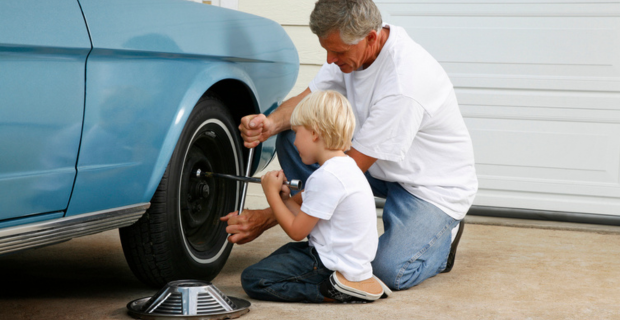Date Published: 2023/12/14
Read Time: mins
What You Need to Know About Getting Tires for Classic Cars

Owning a classic car is like having a piece of automotive history. Every time you step near your ride, you marvel at its exquisite design, exceptional performance, and unmatched staying power. But maintaining its glory isn’t just about keeping the paint polished or chrome shiny. You must also consider its tires to ensure your car stays firmly planted on the road through every mile. Ready to learn all you need to know about getting tires for your classic car? Read on to get the details.
It’s Not Just About Tread — Tires Have an Expiration Date
Regarding your safety, it’s not just the tread depth that counts. A tire’s age can compromise its performance, handling, and integrity.
So, even if your tires look perfect outside, checking their manufacture date on the sidewall is important. Look for the four-digit DOT code, with the first two numbers showing the week and the last two representing the year it was made.
If your tires are over 6 to 10 years old, do yourself a favour and replace them with new rubber. That way, the old rubber doesn’t hold back your cherished classic's full potential and safety.
Materials Matter: Bias-play vs. Radial Tires
Bias-play tires were the go-to until the 1970s. This tire design had layers of rubber-coated fabric running diagonally, offering mediocre grip but just the right look for a classic car.
Radial tires arrived on the scene in the late 1960s, quickly pushing bias-play rubber out of the spotlight. The radial design offers a smoother ride and better grip, making them the smarter choice for automotive enthusiasts.
However, if you don’t want to compromise on looks, you can still get bias-ply tires from some manufacturers. Just keep in mind that the rubber may fall short in performance compared to modern radials.
Tire Sizes Have Undergone a Transformation
Many classic cars came with different tire sizing standards. If your car still has its ancient rubber at all four corners, you might be faced with the daunting task of figuring out the old metric or numeric sizes.
Luckily, you don’t have to decipher what sizes like “6.70-15” mean on your own. Today, many conversion calculators are available to help you find the equivalent modern size.
If you plug that old size into the calculator, it’ll let you know to look for an ST205/75R15 radial tire, making it easier than ever to find replacement rubber. You can also talk to your local tire shop if you’d like help finding the best tires for your ride.
Classic Looks + Modern Performance = Perfection
There is some good news if you’re not willing to compromise on either looks or performance. Some manufacturers now offer tires that combine the best of both worlds. They not only look old-school cool but also have the tech of today’s tires.
By switching to these innovative tires, you’ll be geared up for classic car shows, Sunday drives, and everything in between. To get the most out of each set, remember to inflate your tires properly, check the tread depth, and get regular wheel alignments.
Tires aren’t the only thing protecting your classic car—what insurance coverage you choose matters, too. For the ultimate in protection, you need purpose-built classic car insurance designed to deliver true peace of mind. And our team at Orbit Insurance Services is here to help. All you have to do is request a quote through our online form, and we’ll be in touch soon to answer all your questions.